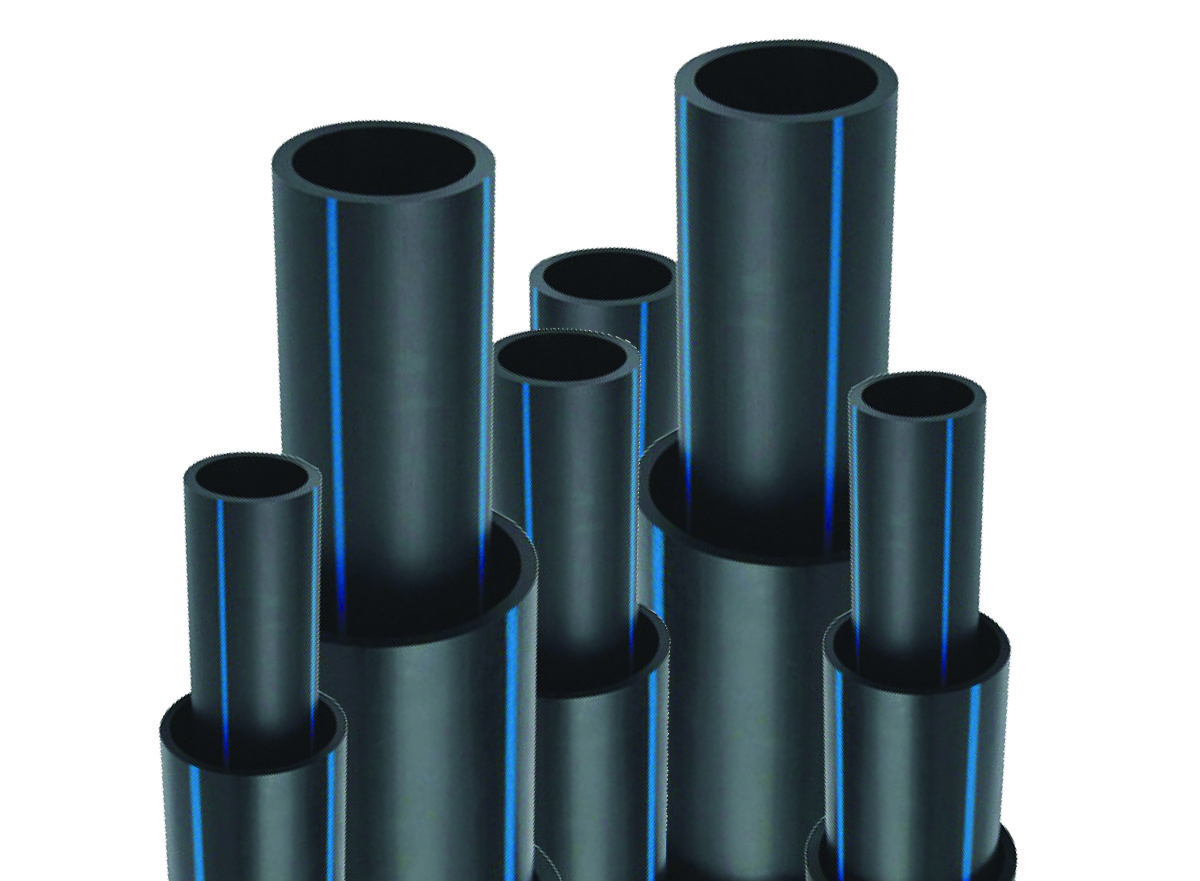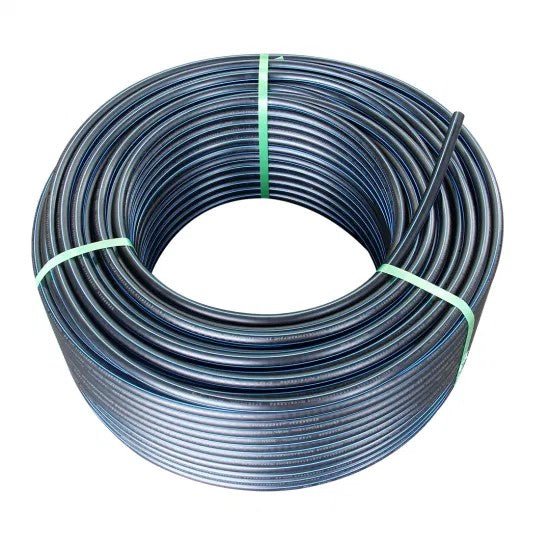Exploring American Plastics HDPE Pipe Manufacturing and Its Role in Modern Infrastructure
Wiki Article
Discover the Manufacturing Process Behind High-Quality HDPE Pipeline and Its Applications
The production procedure of top quality HDPE pipelines is complex and methodical. It starts with the option of basic materials that enhance efficiency. Following this, ethylene undergoes polymerization to form resin, which is then shaped with extrusion. Quality assurance is critical, making sure that the end product meets stringent requirements. The trip of HDPE pipes does not end with manufacturing. Their applications across different markets reveal a broader significance worth analyzing.Comprehending HDPE: Properties and Advantages

High-density polyethylene (HDPE) is a functional polycarbonate known for its toughness and resistance to numerous ecological elements. This product exhibits exceptional tensile strength, making it ideal for requiring applications. Its low-density structure adds to a lightweight item, assisting in simplicity of managing and setup. HDPE additionally showcases amazing resistance to chemicals, which lessens destruction when exposed to rough substances.
The material's low moisture absorption further enhances its durability, making it suitable for usage in pipelines and tank. Furthermore, HDPE is resistant to ultraviolet (UV) radiation, guaranteeing that products keep their integrity even when revealed to sunshine. Moreover, its versatility permits the development of complex shapes without compromising strength. The environmentally friendly nature of HDPE, usually stemmed from recycled materials, adds to its allure, advertising sustainable techniques in manufacturing. On the whole, these residential properties and advantages make HDPE a favored choice for various commercial and customer applications.
Basic Material Choice for HDPE Production
The option of basic materials for HDPE manufacturing is vital to validate the end product satisfies the wanted specifications and top quality requirements. High-density polyethylene (HDPE) is mainly generated from polymerized ethylene, originated from nonrenewable fuel sources such as gas or unrefined oil. The high quality of these feedstocks greatly influences the mechanical and thermal residential properties of the final HDPE.Additives additionally play a considerable duty in enhancing HDPE's performance, consisting of antioxidants, UV stabilizers, and colorants, which improve toughness and resistance to environmental elements. The choice procedure should consider not just the chemical composition of the raw products but likewise their handling characteristics to guarantee reliable production.
The sourcing of raw materials need to focus on sustainability and compliance with ecological guidelines, as liable techniques are essential in today's market. Inevitably, mindful raw material choice lays the foundation for producing premium HDPE pipelines appropriate for varied applications.
The Extrusion Refine: Forming HDPE Pipeline
The extrusion process plays a vital duty in forming HDPE pipelines, starting with meticulous product preparation strategies that assure excellent flow and uniformity. Equally vital is the layout of the die, which directly affects the last dimensions and surface area high quality of the pipe. With each other, these elements contribute significantly to the performance and quality of HDPE pipeline manufacturing.Material Prep Work Strategies
Effective production of HDPE pipes begins with meticulous product preparation techniques, specifically the extrusion process. Throughout this stage, high-density polyethylene material is first dried to eliminate moisture, ensuring optimal flow qualities. The resin is after that fed into the extruder, where it undertakes heating and melting, transforming right into a thick state. This heating procedure is carefully controlled to preserve the product's stability and efficiency. The molten HDPE is forced with a die, shaping it into a continual pipe form. Correct temperature level management during extrusion is necessary, as it directly impacts the product's properties and the last product high quality. Once shaped, the HDPE pipe is cooled down and reduced to specified lengths, prepared for subsequent handling and applications.Die Style Value
Accuracy in die design plays an essential duty in the extrusion process of HDPE pipelines. The die works as the last shaping device, directly influencing the pipe's dimensions, wall thickness, and surface coating. A well-designed die assurances consistent material flow, lowering issues such as irregularities and vulnerable points. The geometry of the die should be enhanced to suit the specific buildings of HDPE, including its thickness and thermal actions throughout extrusion. Furthermore, the cooling price of the product as it travels through the die can significantly influence the pipeline's structural integrity. Subsequently, spending in advanced look these up die innovation is vital for producers intending to generate high-quality HDPE pipelines that fulfill sector standards and consumer expectations.Quality Control Steps in HDPE Production
Numerous factors affect the quality of HDPE pipeline manufacturing, effective quality control steps are important to guarantee uniformity and dependability in the last product (American Plastics HDPE Pipe Manufacturing). Secret quality assurance practices consist of strenuous material assessment, validating that the raw polyethylene meets well established criteria for purity and thickness. Throughout the extrusion process, parameters such as temperature level, stress, and cooling time are closely kept track of to maintain dimensional accuracy and structural stabilityOn top of that, post-production testing is vital; producers frequently carry out hydrostatic examinations to analyze the pipeline's toughness and resistance to stress. Aesthetic evaluations for surface area flaws additionally enhance quality control. Certification from pertinent requirements organizations, like ASTM or ISO, gives an added layer of credibility. By executing these detailed top quality control steps, makers can minimize issues, improve performance, and ensure that the HDPE pipes fulfill the certain requirements of different applications, ultimately bring about consumer contentment and count on in the item.
Applications of HDPE Pipe Throughout Industries
HDPE pipelines are utilized across different sectors because of their toughness and convenience. In water circulation systems, they assure efficient distribution, while in wastewater management, they provide trustworthy solutions for waste transportation. In addition, agricultural irrigation networks benefit from HDPE's resistance to rust and versatility, making it a perfect choice for modern-day farming methods.
Water Distribution Equipments
A significant number of sectors depend on high-density polyethylene (HDPE) pipelines for reliable water distribution systems. Understood for their resilience and resistance to corrosion, HDPE pipes are widely made use of in municipal water supply networks, farming irrigation, and commercial applications. Their lightweight nature promotes easy handling and setup, reducing labor costs and time. In addition, HDPE pipes can fit various stress levels, making them ideal for both reduced and high-pressure systems. Texas hdpe pipe manufacturer. The flexibility of the material permits smooth assimilation into existing facilities, minimizing the demand for extensive excavation. HDPE's resistance to chemical leaching assurances that the water provided remains risk-free and clean, making it an ideal option for maintaining the high quality of potable water across numerous industries.Wastewater Monitoring Solutions
Effective water circulation systems likewise lead the way for ingenious wastewater administration remedies, where high-density polyethylene (HDPE) pipes redirected here play a considerable function. Distinguished for their longevity and resistance to corrosion, HDPE pipelines are optimal for transferring wastewater in numerous settings. Their versatility enables easy setup in complex atmospheres, lessening the requirement for considerable excavation. Additionally, HDPE's smooth indoor surface area lowers rubbing, boosting circulation prices and efficiency. These pipes are additionally resistant to chemical leaching, ensuring that pollutants do not jeopardize the surrounding environment. Industries, districts, and therapy centers increasingly depend on HDPE pipelines for their integrity and durability, making them a recommended selection for contemporary wastewater monitoring systems. This adaptability emphasizes the crucial significance of HDPE pipes across various applications.Agricultural Irrigation Networks
Agricultural watering networks benefit substantially from making use of high-density polyethylene (HDPE) pipes, which supply reliable and trustworthy water distribution to plants. HDPE pipes are light-weight, making them very easy to carry and mount, while their adaptability permits numerous setups in varied surfaces. These pipes show exceptional resistance to rust, chemicals, and UV radiation, making certain resilience in harsh agricultural atmospheres. Additionally, their smooth interior surface area lessens rubbing loss, enhancing water circulation and reducing power prices connected with pumping. The durability of HDPE pipelines, frequently surpassing half a century, adds to lower maintenance and substitute expenditures. Consequently, farmers significantly rely on HDPE pipelines to enhance irrigation performance and advertise lasting farming methods, inevitably visit this web-site resulting in boosted plant yields and resource conservation.Future Trends in HDPE Pipe Technology
As the demand for lasting and effective facilities expands, innovations in HDPE pipeline technology are poised to transform different industries. Arising patterns consist of the assimilation of wise technologies, such as sensors and IoT capabilities, which help with real-time monitoring of pipeline problems, reducing maintenance expenses and preventing leaks. Furthermore, the growth of sophisticated production methods, such as 3D printing, is enabling the manufacturing of complex, tailored pipe designs that satisfy specific job demands.The emphasis on recycling and round economic situation methods is driving the technology of HDPE pipelines made from recycled products, improving sustainability. Improved jointing techniques, such as electro-fusion and mechanical installations, are also boosting installation performance and dependability. The growing emphasis on ecological laws is pushing suppliers to adopt greener production processes, making sure that HDPE pipelines not only fulfill industry criteria but also promote a more sustainable future for infrastructure advancement.
Regularly Asked Inquiries
Exactly How Does HDPE Compare to Other Plastic Products?
HDPE outperforms lots of various other plastic materials regarding sturdiness, chemical resistance, and versatility. Its reduced density and high tensile toughness make it ideal for numerous applications, frequently going beyond choices in both performance and longevity.What Are the Environmental Effects of HDPE Production?
The environmental influences of HDPE production include greenhouse gas exhausts, energy consumption, and possible air pollution from making procedures. In addition, improper disposal can lead to dirt and water contamination, elevating concerns concerning long-term eco-friendly effects.Can HDPE Pipeline Be Recycled?
Yes, HDPE pipes can be reused. Several centers approve made use of HDPE for handling, transforming it into brand-new products. This reusing adds to sustainability efforts, minimizing plastic waste while preserving resources and energy in the manufacturing cycle.What Is the Life Expectancy of HDPE Pipeline?

How Do Temperature Level Variants Impact HDPE Pipe Efficiency?
Temperature variations significantly impact HDPE pipeline efficiency, affecting adaptability and stamina. High temperature levels can bring about softening, while low temperature levels may cause brittleness, ultimately affecting the pipe's sturdiness and viability for different applications in diverse atmospheres.Report this wiki page